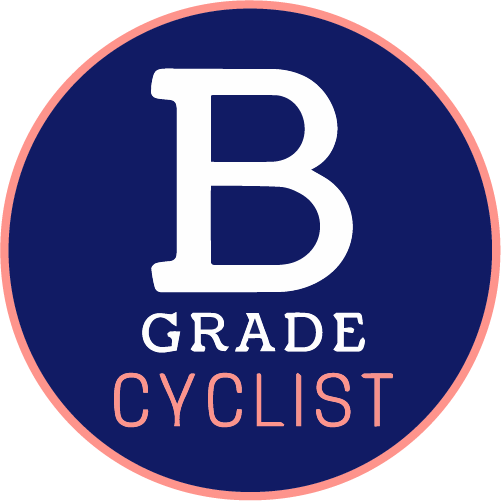After a series of minor crashes, I went to the doctor to treat keloids on my knee. A keloid is a raised clump of hard scar tissue that forms when a wound doesn’t heal properly. Usually harmless, but annoying when they’re on a part of anatomy that moves a lot – like a cyclist’s knee.
My doctor said that injecting steroids directly into the keloids might reduce their size. He wrote me a prescription, told me to buy the medicine and come back later to get injected. I took a quick look at what he’d prescribed.
Triamcinolone. The name rung a bell. Where had I heard it before? I could swear it was mentioned on a CyclingTips podcast, or something.
“Isn’t that on the anti-doping list?” I asked.
The good doctor clicked through a few screens on his computer, then nodded in agreement. “Ah, yes. So it is.”
(He then made a note on my patient profile that I’m something called an “Elite Athlete”. So if you’re a B-grade club racer looking for a quick ego boost, just ask your doctor).
When I Googled it at home, I quickly remembered why the name was so familiar. Triamcinolone is a performance-enhancing drug that Bradley Wiggins used (legally, ostensibly to treat allergies) before winning the 2012 Tour de France. It was the substance at the centre of Team Sky’s “Jiffy Bag” affair.
That discovery freaked me out a little. If I took these injections, could I still race? Would it be cheating? Even in local club races, I don’t want to be a doper – not even inadvertently! So, I did some more Googling about whether triamcinolone is a prohibited substance. As it turns out, it’s fairly easy to find out if your medicine is banned.
Using Global DRO to check your substance
I started at the Australian Sports Anti-Doping Authority (ASADA) website. ASADA linked me to a handy search tool, which you can use to check whether or not your medication is a prohibited substance.
It’s intuitive to use. First, open up the Global DRO tool. Then, select your user type (“Athlete”), sport (“Cycling”), nation of purchase (“Australia”) and type in the name of your drug. You can either enter the brand name (in my case, “Kenacort-A 10”) or the active ingredient (“triamcinolone”). Click “Search”.

Out of the search results, click the one that corresponds to your medication. In my case, “triamcinolone” only returned one result. Global DRO found other names for the drug, including “triamcinolone acetonide”, which is how my particular medication is labelled. I clicked it.
The next page shows the results, which are segmented according to two factors: firstly, the route of administration (oral, injection, topical, etc.) and secondly, whether the substance will be taken in-competition or out-of-competition. That matters because the status of your medication is not simply a question of what the substance is, but also how and when it’s administered.

As you can see from the results, triamcinolone is not prohibited out-of-competition at all. In competition, it is prohibited only if taken orally, by intra-muscular injection or by intravenous injection.
In-competition and out-of-competition
But what does “out-of-competition” mean? The Global DRO FAQ provides the answer:
Unless provided otherwise in the rules of an International Federation or the ruling body of the Event in question, ‘in-competition’ means twelve hours before the start of a competition through the end of the competition (for example, award ceremony and conclusion) including the sample collection process (drug testing process) related to the competition. Keep in mind you may be in-competition for drug testing purposes even though you haven’t arrived at the competition grounds yet, or you have already left!
‘Out-of-competition’ is any time that is not in-competition (for example training, off-season, the days between competitions).
Source: Global DRO (emphasis added)
I rang ASADA and asked for clarification. They advised that “in-competition” usually means any time from 12 hours before the start of a competition through to the end of the competition, but that I should check the rules of my particular sport. I went to Cycling Australia’s anti-doping policy, which indeed confirmed that the standard 12-hour definition applies.
Results and implications
So, the Global DRO search shows that my triamcinolone injections aren’t prohibited if taken out-of-competition. In fact, they wouldn’t be prohibited even if taken in-competition, because the method of administration would be “injection – local or intra-articular”.
Phew! A sigh of relief. I’m not going to be a doper.
Okay, so in reality, as a local club racer, this medication was never going to matter much anyway. There are no anti-doping tests at the races I’m likely to do. But even for amateur cyclists, it’s worth checking your medications – and not just to satisfy your curiosity or uphold personal integrity. Earlier this year, a 90-year-old US cyclist made the news for an anti-doping violation. He’d tested positive for a prohibited substance after setting a world record at the USA Masters Track National Championships. Apparently, the positive test came from eating contaminated meat.
At whatever level, it’s good to make sure you’re clean, especially if you’re planning on breaking a Masters world record or tackling a big event like the UCI Gran Fondo World Championships. So, don’t be complacent. Go check your medication against the anti-doping list. It’s quick and easy. (And pretty interesting, too – do a search for salbutamol, the substance at the centre of Chris Froome’s big doping controversy).
Have you found any surprising or interesting results after searching your medication on Global DRO? Let us know in the comments below.
